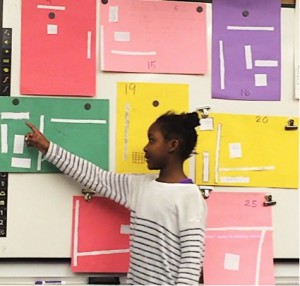Third Graders Explore Area and Perimeter by Measuring a “Pocket Park”
As part of their study of area and perimeter, third graders in Elaine and Jessie’s class measured the perimeter of “Little Red Square”, the small pocket park that lies just in front of LREI on Sixth Avenue. Each class divided into small groups and used trundle wheels to measure the four sides of the park. Then they calculated the perimeter by adding up the side dimensions. When the class looked at the set of data, they realized that their perimeter data varied, and they attributed this to the inexactness of using the trundle wheel. They decided to use the middle number of the data set (the median) as their “working” perimeter for the park. Continue reading

